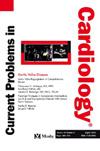经肝静脉导管消融治疗成人左右心房心律失常:挑战和结果。
IF 3
3区 医学
Q2 CARDIAC & CARDIOVASCULAR SYSTEMS
引用次数: 0
摘要
导读:电生理(EP)手术通常通过股静脉系统进行,但在一些患者中,下腔静脉(IVC)不可用。肝静脉已成为股静脉通道的可行替代方案,它提供了一条较低的通道,可容纳较大的导管鞘,以获得更好的导管操作。虽然经皮经肝入路已成功应用于儿科人群,但其在成人中的应用很少,并发症发生率约为5%。方法与结果:2018年至2021年间,3例静脉通路受限患者接受了消融治疗。经皮经肝入路为左、右心律不齐的EP研究、电解剖定位和有效射频消融提供了良好的支持。无明显并发症记录,所有患者在手术后48小时内出院。随访时,所有患者心律失常控制良好,无明显不良事件发生。结论:对于静脉通路有限的成人EP患者,经皮经肝通路是一种可行且安全的替代股静脉通路的方法。本文章由计算机程序翻译,如有差异,请以英文原文为准。
Transhepatic venous access for catheter ablation of right and left side atrial arrhythmias in adults: challenges and outcomes
Introduction
: Electrophysiologic (EP) procedures are typically performed via the femoral venous system, but in some patients, the inferior vena cava (IVC) is unavailable. The hepatic vein has emerged as a viable alternative to femoral access, providing an inferior route that accommodates large sheaths required for better catheter manipulation. Although the percutaneous transhepatic approach has been used successfully in the pediatric population, its use in adults is scarce, with a complication rate of approximately 5 %.
Methods and results
: Three patients with limited venous access were referred for ablation between 2018 and 2021. The percutaneous transhepatic access approach provided good support for the EP study, electro-anatomical mapping, and effective radiofrequency ablation of right and left-side arrhythmias. No significant complications were documented, and all patients were discharged within 48 h of the procedure. At follow-up, all patients had excellent arrhythmia control without significant adverse events.
Conclusion
: Percutaneous transhepatic access is a feasible and safe alternative to femoral venous access for EP procedures in adult patients with limited venous access.
求助全文
通过发布文献求助,成功后即可免费获取论文全文。
去求助
来源期刊

Current Problems in Cardiology
医学-心血管系统
CiteScore
4.80
自引率
2.40%
发文量
392
审稿时长
6 days
期刊介绍:
Under the editorial leadership of noted cardiologist Dr. Hector O. Ventura, Current Problems in Cardiology provides focused, comprehensive coverage of important clinical topics in cardiology. Each monthly issues, addresses a selected clinical problem or condition, including pathophysiology, invasive and noninvasive diagnosis, drug therapy, surgical management, and rehabilitation; or explores the clinical applications of a diagnostic modality or a particular category of drugs. Critical commentary from the distinguished editorial board accompanies each monograph, providing readers with additional insights. An extensive bibliography in each issue saves hours of library research.
 求助内容:
求助内容: 应助结果提醒方式:
应助结果提醒方式:


